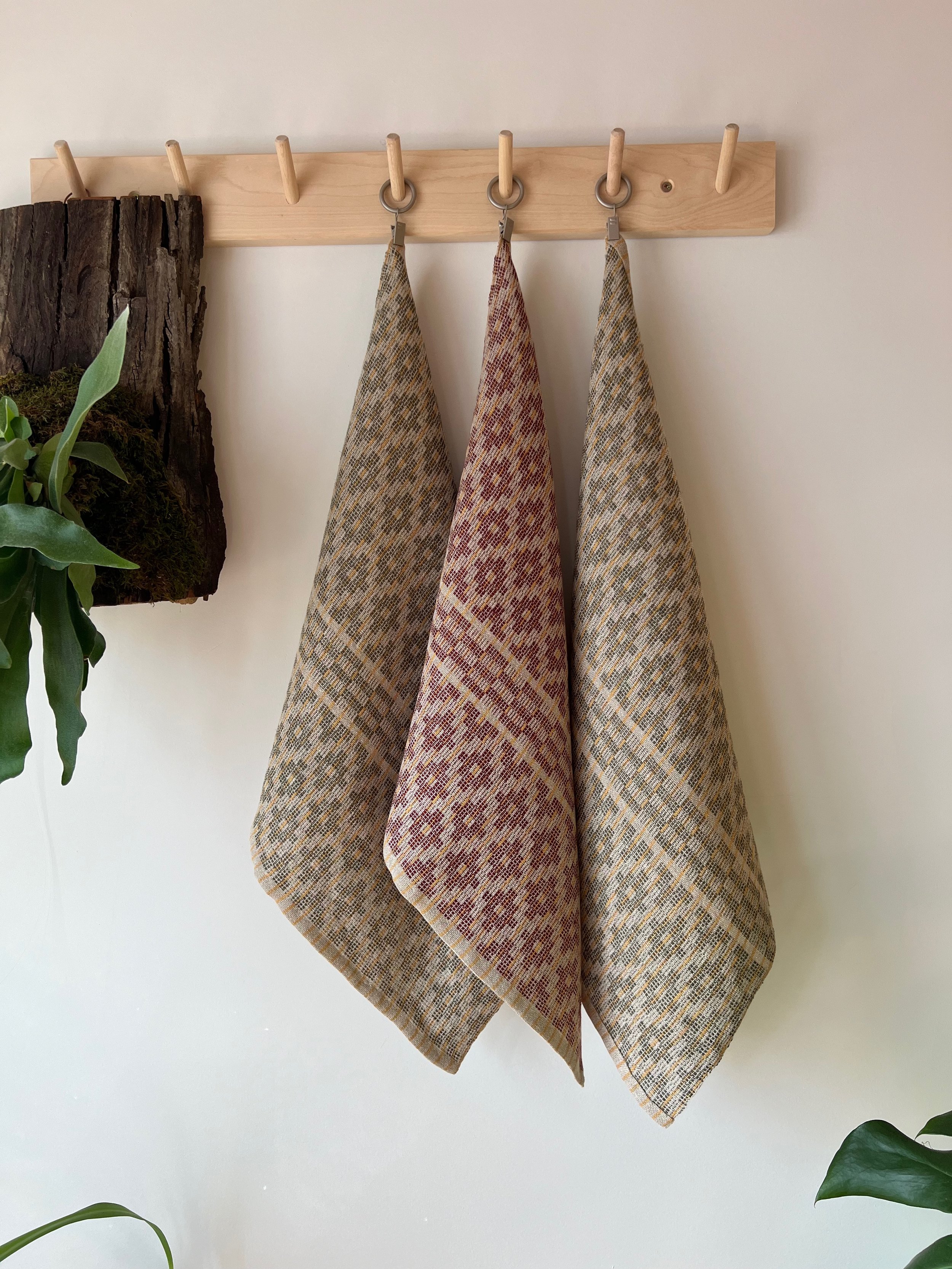
Handwoven Linen Care
Linen is a durable natural fiber, and with a few mindful steps, you can keep your handwoven linen items looking beautiful for years. Here’s a quick guide to caring for them:
Washing: Machine wash linen towels and table linens in cold water using gentle detergent. For optimal absorbency, avoid fabric softeners when washing your towels. Hand washing may be more appropriate for linen wearables. Avoid bleach, as it can weaken the fibers.
Drying: For a more formal look, lay flat to air dry, or if hanging, avoid direct sunlight, which can cause fading. Avoid wringing out linen, as it may stretch the fibers. Towels or more casual linen items can be dried in the dyer, but avoid high heat and fabric softeners/dryer sheets for longevity and absorbency.
Ironing: Ironing table linens maintains a formal look and feel. If you prefer a more casual look, don’t worry about ironing. If ironing is needed, do so while the fabric is still damp or use a steam iron on medium heat. Iron on the reverse side to maintain the texture and color.
Storage: Store in a cool, dry place, ideally folded rather than hung, to avoid stretching. Keep away from direct sunlight to prevent fading over time.
General Tips: Linen softens with each wash, so expect your handwoven piece to become even more comfortable and flexible over time!
What to do about stains?
Stains can be managed without harsh chemicals or bleach. Start with the easiest option:
Fresh Stains: Rinse the stain immediately with cool water to prevent it from setting. Avoid hot water, which can set stains into natural fibers like linen.
White Vinegar and Baking Soda: Mix a little white vinegar and water to dab on the stain, followed by a sprinkle of baking soda. Let it fizz for a minute, gently rub, then rinse with cool water.
Lemon Juice and Salt: For tougher stains, mix lemon juice and salt to form a paste. Apply it to the stain and let it sit in sunlight for 10-15 minutes, which helps naturally bleach the fabric. Rinse thoroughly afterward.
Hydrogen Peroxide (for Light Colors): If the stain persists, apply a small amount of hydrogen peroxide directly to it. Let it sit briefly, then rinse. Use sparingly, as it may have a light bleaching effect.
Gentle Soak with Dish Soap: For oily stains, add a few drops of gentle dish soap to cool water and let the item soak for 30 minutes, then rinse.
After treating, always wash as usual and air dry to help preserve the linen's fibers. Avoid harsh scrubbing or wringing to protect the weave.
Stripping Linen
Stripping linen can help remove buildup from detergents, oils, and minerals, leaving it feeling softer and cleaner. Here’s a simple way to strip linen naturally:
Prepare a Stripping Solution:
In a large tub or basin, fill with warm to hot water. (because stripping is not done regularly, occasional use of hot water should be fine)
Add 1/4 cup of baking soda and 1/4 cup of white vinegar. Stir to dissolve fully. You can also use detergent, washing soda, and borax.
Soak the Linen:
Submerge the linen items completely in the solution. Let them soak for 4-6 hours. Occasionally stir the water to help release any buildup.
Rinse Thoroughly:
Drain the solution and rinse the linen well with cool water to remove any remaining residue. Repeat rinsing if the water still looks murky.
Wash and Dry as usual.
Stripping is best done sparingly, around once or twice a year, to avoid over-processing the fabric. This method will refresh your linen without harsh chemicals, preserving its texture and natural qualities.